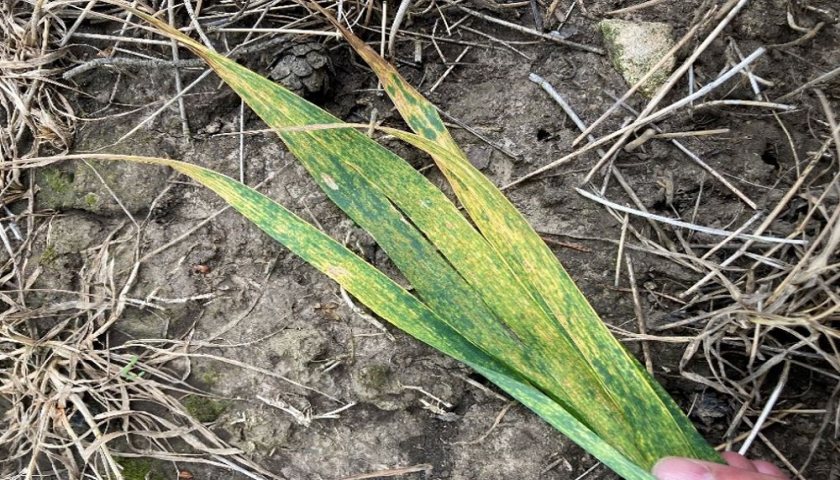
Farmers and agronomists have been told to 'play their part' by being on the lookout for changeable brown rust and yellow rust pathogen populations.
AHDB has today warned that brown rust has been a talking point in recent seasons, with the focus usually on yellow rust.
Brown rust in wheat took hold quite early this year, according to the levy organisation, with it recording some “unusual stress-related” brown rust symptoms.
In recent years, the UK brown rust population has shifted, with more pathogen isolates able to cause disease (virulence) on varieties with the specific resistance leaf rust (Lr) resistance gene – Lr24.
Virulence to this gene was first detected by the UK Cereal Pathogen Virulence Survey (UKCPVS) in 2011. It disappeared in the population after 2017 before resurging in 2022.
AHDB senior crop protection scientist, Catherine Harries explained more: "Theodore has the Lr24 gene. Increasing areas of this variety could have selected for brown rust pathogens with the keys to unpick the Lr24 lock."
Although Theodore is not included on Recommended List (RL) 2024/25, it is still included as a disease control in the trials. The variety used to have high levels of resistance to brown rust.
From initial RL trial data for harvest 2024, the variety now appears to have more brown rust than Crusoe (a variety with a brown rust disease rating of 3).
Ms Harries explained that virulence for Lr24 seems to be firmly embedded in the pathogen population.
“However, the UKCPVS cannot confirm this without a good geographic distribution of samples (from any variety)," she added.
“At present, most brown rust samples have come from around Lincolnshire. Although the spread is better for yellow rust, there are still many gaps.”
The UKCPVS first detected yellow rust virulence for the variety Crusoe in 2013. For years, the variety sported a disease resistance rating of 9.
In 2022, an increasing proportion (8%) of pathogen isolates had virulence for Crusoe, with more yellow rust observed on this variety in RL trials in 2023, with the disease rating dropping to 8 in the current (2024/25) RL.
“We use isolates that are virulent on Crusoe in the inoculated RL trials, so the levels of disease were not surprising,” Ms Harries said
“The UKCPVS tested an isolate with virulence for Crusoe against all RL varieties at the young plant (seedling) stage.
“This isolate also had virulence for KWS Extase, which has also seen a decrease in its RL yellow rust disease rating in recent years (it has a rating of 7 on RL 2024/25).”
